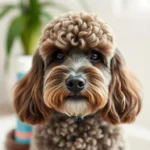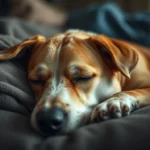
Introduction
Dog hairballs are a common concern among pet owners, often leading to confusion and worry. Unlike cats, dogs do not typically form hairballs in the same way, but they can still experience a buildup of hair in their digestive system. Understanding what dog hairballs are, how they form, and the best practices for managing them is crucial for every dog owner.
Healthy dog care practices are vital to ensuring your canine companion leads a happy and fulfilling life. One of the aspects of dog health care that often gets overlooked is the issue of hairballs. Addressing this condition not only improves your pet’s comfort but also contributes to their overall health.
In this article, we will delve into the causes, symptoms, prevention, and treatment of dog hairballs. You will gain insights into proactive health care measures that can keep your dog healthy and happy.
Understanding Dog Hairballs
What Causes Dog Hairballs?
Grooming Habits
One of the primary reasons for dog hairballs is related to grooming habits. Dogs that groom themselves excessively or have certain coat types are more likely to develop hairballs. Breeds with longer hair, such as Afghan Hounds or Shih Tzus, are particularly prone to this issue. When dogs lick their fur, they ingest hair, which can accumulate in their stomach.
Health Factors
Various health factors can contribute to hairball formation. Allergies and skin conditions may cause dogs to itch and lick their fur more frequently, leading to hair ingestion. Additionally, a poor diet lacking essential nutrients can also impact their grooming habits. A well-balanced diet is crucial for maintaining healthy skin and fur, which can reduce the likelihood of hairballs forming.
Symptoms of Hairballs in Dogs
Physical Signs
Symptoms of dog hairballs can manifest in several ways. Vomiting is one of the most common signs, as the dog attempts to expel the accumulated hair. Coughing and gagging may also occur as the dog tries to clear its throat of any obstructions.
Behavioral Signs
Changes in appetite can be another indicator. If your dog is suddenly less interested in food or seems lethargic, it may be experiencing discomfort from hairballs. Increased lethargy and general malaise should not be ignored, as they can signal underlying health issues.
Prevention of Dog Hairballs
Proper Grooming Techniques
Regular Brushing
One of the most effective ways to prevent dog hairballs is through proper grooming. Regular brushing helps to remove loose hair before it can be ingested. The tools you use will depend on your dog’s coat type. For example, slicker brushes work well for long-haired breeds, while bristle brushes are ideal for short-haired dogs. Aim to brush your dog at least once a week, or more frequently during shedding seasons.
Diet and Nutrition
High-Quality Dog Food
Feeding your dog a high-quality, balanced diet is essential for reducing hairballs. Look for dog food that contains natural ingredients and is rich in proteins, vitamins, and minerals. Ingredients like omega fatty acids can promote healthy skin and coat, reducing shedding and hair ingestion.
Hydration
Proper hydration is equally important. Ensure your dog has access to fresh water at all times. Adequate water intake helps maintain digestive health and can aid in the prevention of hairballs.
Environmental Factors
Reducing Allergens
Keeping your home clean can also play a significant role in preventing dog hairballs. Regularly vacuuming and dusting reduces allergens that may cause your dog to itch and lick its fur. Consider using air purifiers to improve indoor air quality, as this can help alleviate allergy-related grooming behaviors.
Treatment of Dog Hairballs
At-Home Remedies
Dietary Adjustments
If your dog is showing signs of hairballs, dietary adjustments can help. Incorporating fiber into their diet can aid in digestion and help move hair through the gastrointestinal tract. Natural remedies like pumpkin puree are rich in fiber and can be an effective addition to your dog’s meals.
Veterinary Treatments
When to Consult a Vet
If your dog is experiencing severe symptoms, such as persistent vomiting or lethargy, it’s crucial to consult a veterinarian. These could be signs of a more serious condition, and professional intervention may be necessary.
Possible Treatments
Your vet may recommend medications or supplements specifically designed to reduce hairballs. In severe cases, medical procedures may be required to remove hairballs that are causing blockages in the digestive tract. Always follow your vet’s guidance to ensure your dog’s safety and well-being.
Long-Term Health Care for Dogs
Regular Veterinary Check-Ups
Importance of Routine Visits
Routine veterinary check-ups are essential for maintaining your dog’s overall health. Regular visits can catch any potential issues early, including those related to dog hairballs. Vaccinations and health screenings are crucial for preventing diseases that could exacerbate grooming behaviors.
Monitoring and Adjusting Care
Observing Changes in Behavior
Keep an eye on your dog’s behavior and grooming habits. If you notice changes, such as increased licking or alterations in appetite, it may be time to adjust their care regimen. Regularly assess their diet based on their health needs, and consult with your veterinarian if necessary.
FAQs About Dog Hairballs
Is it normal for dogs to have hairballs?
While it is not uncommon, it is not considered normal for dogs to frequently experience hairballs. Occasional hairballs may occur, especially in long-haired breeds, but persistent issues should be addressed.
Can hairballs lead to serious health issues?
Yes, if left untreated, hairballs can lead to more serious conditions, including blockages in the digestive system. It’s important to monitor your dog’s health and seek veterinary advice if symptoms persist.
Conclusion
Understanding and managing dog hairballs is an essential aspect of dog health care. By being proactive in grooming, nutrition, and overall care, you can help prevent this issue and ensure your dog remains healthy and happy. Regular veterinary visits and monitoring your dog’s behavior will further contribute to their well-being. Remember, a well-cared-for dog is a happy dog, and your efforts in managing hairballs are a vital part of that care.









